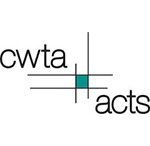Posted: Feb 3 '13
Fall Protection Plans are an important element for worker safety, and some jurisdictions even require them by legislation. Essentially they are a checklist to ensure that any of the important elements are not forgotten.
In Alberta when a worker may fall 10' and not protected by guardrails, the following elements are required:
1. Identify the specific fall hazards at the work site. (i.e. falling off a beam, walking off an unguarded edge, slipping from a ladder).
2. What equipment you are going to use. For example, harness, connectors (such as vertical life line, self retracting life line, lanyard etc) and anchor connector.
3. The anchor "structure" to be used during the work. For example are you attaching to a structural beam, ladder rung, or a engineered anchor point?
4. That there is enough clearance so that a falling worker does not hit the ground or any obstacles (pipes, scaffold) below.
5. The step by step plan used to assemble, maintain, inspect, use and disassemble the fall protection system, (if applicable). Here is the most important piece of information in this post: Where possible, you should keep all the manufacturers instructions for your equipment in a binder, and keep a copy of this binder onsite. The reason you are doing this, is so that you can simple make a reference to the manufacturers instructions when you write your fall protection plan (this is assuming you have read the instructions for the particular piece). However you can imaging how "wordy" your fall protection plans can get if you had to write all the information out. As the old saying goes, why re-invent the wheel. The instruction manual for your equipment will have descriptive well written directions for the above listed elements.
6. The rescue procedures. You should have training in the rescue plan, or have a provision for contacting someone who has appropriate training. Check back with this blog in the next month and we will be posting a couple simple rope rescue plans.
7. It is important that the plan is available at the worksite to all workers, and it is updated to remain current.
When writing your plan, keep the wording simple and to the point. Review the finished document, and make sure it is simple and to the point.
Contact us with any questions!




